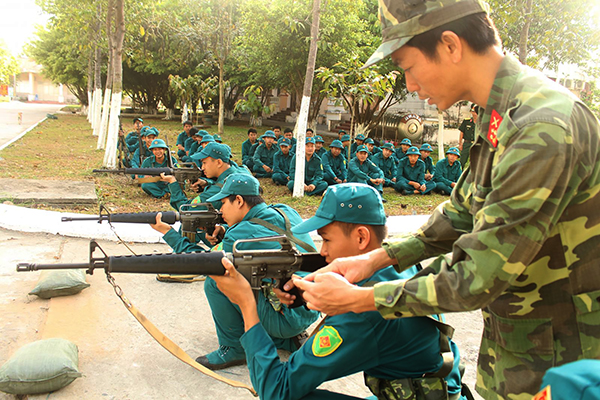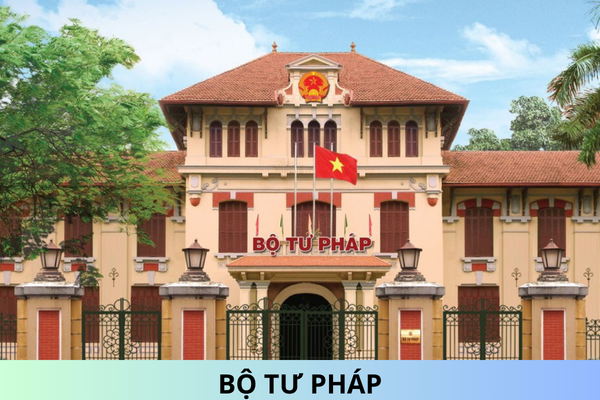National standards for the rainwear of the People's Self-Defense Forces regarding the uniform of the People's Self-Defense Forces in Vietnam
What are national standards for the rainwear of the People's Self-Defense Forces regarding the uniform of the People's Self-Defense Forces in Vietnam? Thank you!

National standards for the rainwear of the People's Self-Defense Forces regarding the uniform of the People's Self-Defense Forces in Vietnam - image from internet
According to the National standard TCVN/QS 1822:2021 for the uniform of the People's Self-Defense Forces, issued together with Circular 94/2021/TT-BQP, the uniform of the People's Self-Defense Forces - Part 28: Rainwear is stipulated as follows:
1 Scope of Application
TCVN/QS 1822-28:2021 specifies the technical requirements and testing methods for the rainwear of the People's Self-Defense Force (including following positions: the military commander of the miinistrial and central agencies, the district-level military commander, the military commander of agencies and organizations, village team leaders, and command positions in mobile and regular self-defense units from platoon leaders and above.).
2 General Provisions
The measurement and testing equipment for the technical specifications of the rainwear of the People's Self-Defense Forces are specified in Annex A.1.
3 Technical Requirements
3.1 General Requirements
3.1.1 Appearance requirements
- The open-front style, which has a full-length zipper, with two side flaps that can be buttoned. There is a waistband inside the coat for adjustment. The coat has a detachable hood with a drawstring. The front body has an outer pocket with a flap. The pocket flap and the hood mouth are attached with Velcro. The back body has a slit and is lined with mesh. The sleeves have elastic cuffs, and the detachable hood is buttoned onto the coat with buttons.
- The pants have an elastic waistband, and the bottom of the pants has buttons on the inside.
3.1.2 Requirements for Materials
- The rainwear are made of blue PVC film with a thickness of 0.12mm to 0.14mm.
- The buttons are made of copper with a diameter of 1.4cm.
- The pants' waistband is 4cm wide.
- The sleeve cuffs' elastic is 1cm wide.
- The coat's zipper is a 5-teeth zipper, crocodile teeth, and the same color as the main material.
- The sewing thread is Peco 50/3, the same color as the main material.
- The hood drawstring has a diameter of 0.6cm, the same color as the main material.
- The plastic stopper is used for the hood drawstring and waistband adjustment, with a round shape.
- The waterproof adhesive tape is a 2cm wide special-purpose tape.
- The Velcro is 2.5cm wide and the same color as the main material.
- The lining of the collar is made of two layers of Peco canvas in moss color.
3.2 Technical Specifications
3.2.1 Basic Dimensions
The rainwear is available in sizes 3, 4, and 5. The basic dimensions of the raincoat and rainwear are specified in Table C.27 of Annex C.
3.2.2 Cutting Requirements
- The cutting of the product must ensure the alignment of the fabric's threads.
- Vertical fabric cutting details: pants, coat body, sleeves, collar, coat pocket, slit, button flaps, elastic cuffs, lining of the collar.
- Horizontal fabric cutting details: coat pocket flap, drawstring channel.
3.2.3 Requirements for Stitching
- Use size 14 needle for stitching, the stitches must be even, without skipped stitches, loose threads, fabric wrinkles, or loose threads;
- The stitching lines must have 4 stitches per 1 cm. The beginning and end of the stitching lines must have 3 backstitches, each measuring 1 cm and overlapping tightly, cut off excess thread neatly, without any skipped stitches, loose threads, or puckering;
- The stitching lines should be 0.1 cm away from the edge: collar edges, pocket openings, 2 sides of buttonholes, cupped foot edges, inner hemline, garment hemline, sleeve plackets, sleeve cuff gathers, waistbands, adhesive attachment;
- Right lapel folded in 2 cm, stitched at both ends and buttonhole stitches secured;
- The stitching lines should be 0.4 cm away from the edge: stitching line for buttonholes;
- The stitching lines should be 0.7 cm away from the edge: collar leaf (part without buttonhole stitching), binding stitching line, edge of lapel, pocket flap, reverse tongue, tongue stitching line, two layers of tongue stitching line interlocked with pins;
- The parallel stitching lines should be 0.7 cm apart: trousers, side seams of the garment, sleeve seams, armhole seams;
- The stitching lines should be 2 cm away from the edge: back waistline stitching line;
- The stitching lines should be 1 cm away from the edge: side seams, shoulder seams, sleeve seams;
- Stitching lines: For the coat: side seams, sleeve seams, sleeve hems, pocket openings, attaching pocket flaps, buttonhole stitching lines, cupped foot edges, cap top stitching. For the pants: vertical stitching lines, inseam stitching lines, interlocked crotch stitching lines using 2 cm wide specialized adhesive tape. The adhesive tape should be evenly placed between stitching lines, ensuring good adhesion temperature, cutting the adhesive tape ends neatly at the details, the pressed stitching line must be fully covered. After pressing, the right side of the product should not have any wrinkles, deformations, shrinkage, and the pressed area should not have any detachment, bulging, and the overlapping point of adhesive tape stitching lines should be 1.5 cm.
3.2.4 Requirements for Button and Velcro Attachment
- Buttons must be securely attached without any slipping, warping, or sinking (on the right side of the button), and must be in the specified position;
- The velcro must be securely stitched, aligned on both sides, and in the specified position.
4 Testing Methods
4.1 Sampling Rate
Testing should be conducted on a percentage of the batch, with a random sample of 5% to 10% of the total quantity of products in the batch.
4.2 General Testing Requirements
4.2.1 Visual Inspection
Visual inspection must meet the requirements outlined in section 3.1.1.
4.2.2 Material Testing
Materials used in production must have clear origins and be tested before being used. The type and quality of raw materials should be verified through standard certification documents, compliance certificates, or quality inspection reports. The results of the testing must meet the requirements outlined in section 3.1.2.
4.3 Technical Specification Testing
The product should be laid flat on a table and measurements should be taken using a measuring tape for length and width, and a caliper for button diameter. The results of the testing must meet the requirements outlined in section 3.2.
5 General Handling
Rainwear must meet the requirements outlined in this standard after production testing. If the testing does not meet the requirements outlined in this standard, the testing must be repeated with double the number of samples taken from the same batch of products. If the retesting still does not meet the requirements, the products cannot be used.
6 Labeling, Packaging, Transportation, and Storage
6.1 Labeling
- The product should have a woven label with the name of the manufacturing unit and size label:
+ For coats: The woven label should be folded in half and attached at the center back neck seam, with the size label attached in the middle of the woven label, with the number facing up.
+ For pants: The label should be attached at the waist seam, at the center back, with the number facing up.
6.2 Packaging
- Coats should be zippered or buttoned up, folded along the collar, folded vertically from the back to the front, with the sleeves folded vertically along the front, and the hood attached to the collar. The coat should be folded into quarters along the length.
- Pants should be folded vertically along the side seam, folded into quarters along the width of the leg. The pants should then be folded in half along the length, and then folded into thirds.
- Coats should be paired with pants of the same size, placed in bags as sets; 10 bags should be tied together to form a bundle, and 2 bundles should be packed in a PP bag as specified in Appendix D.
6.3 Transportation
The products should be transported using common means of transportation and should be carefully covered to protect them from rain and sunlight.
6.4 Storage
The products should be stored in a dry place, protected from rain and sunlight, and should not be stored with chemicals, gasoline, or oil.
Best regards!










